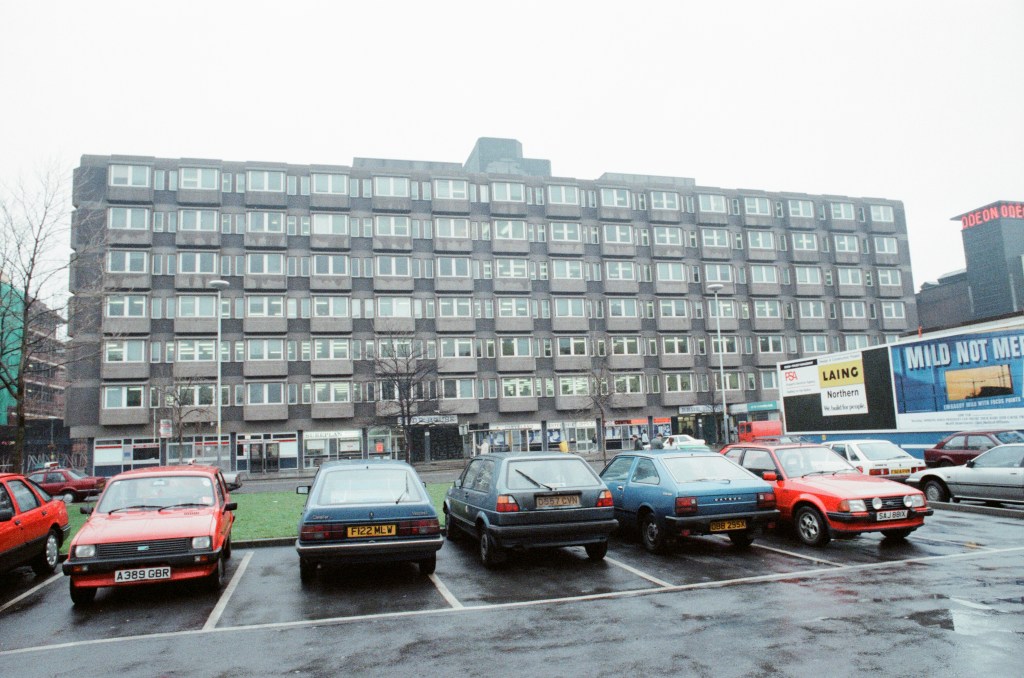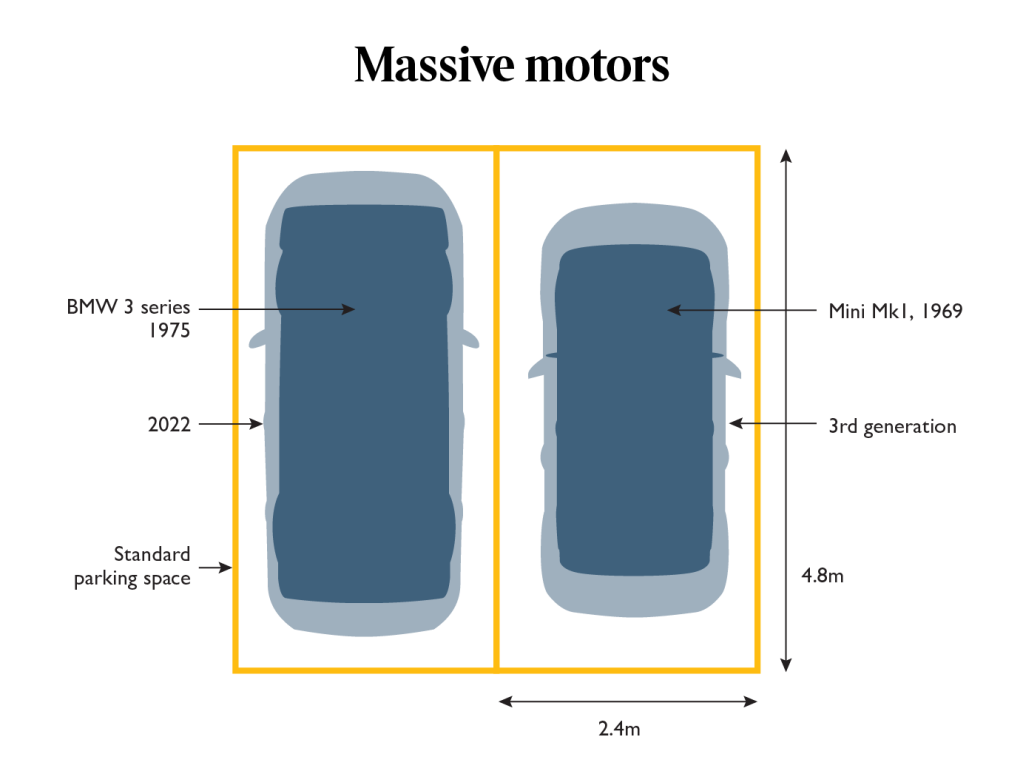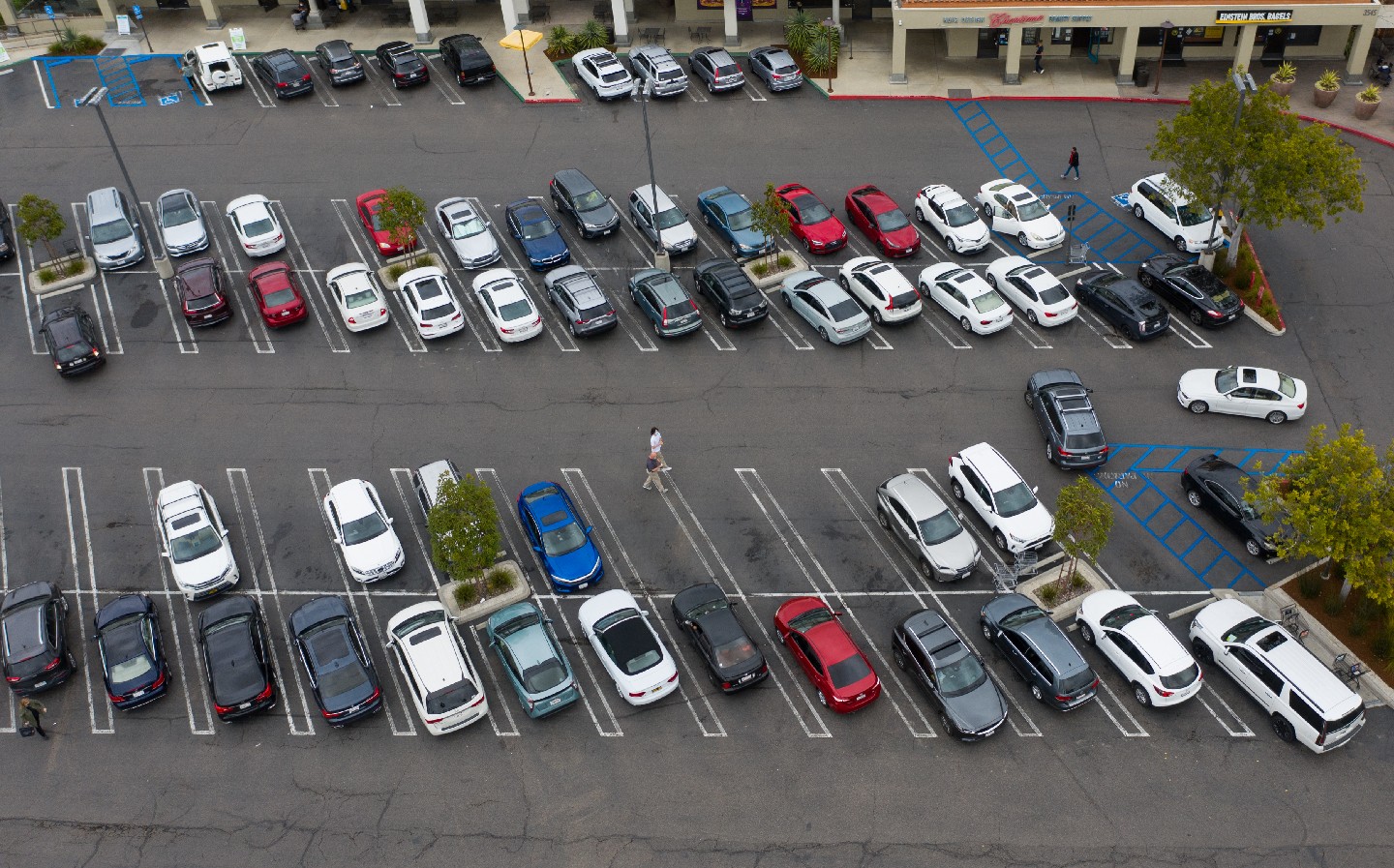Parking spaces could grow to fit today's larger cars after ministerial support
Nissan Squashqai
Car parking spaces in the UK may be about to get bigger under a new plan aimed at addressing the issue of modern cars being too big to comfortably fit into bays.
Ministers have agreed to support the new plan that would increase the size of parking spaces from their current norm of 2.4m x 4.8m to a larger, as-yet-unspecified size to better accommodate the swollen dimensions of modern cars.
Car parking spaces have not significantly increased in size since the publication of the Institution of Structural Engineers’ guidance on the topic in 1976, despite the fact that the top twenty best-selling cars in the UK are, on average, roughly 17% wider than they were even in 1998.

Taking the Nissan Qashqai as an example: at 1.83m wide there is around 23cm to spare on each side of the vehicle for opening doors.
Changes to the guidance on car parking space sizes would apply primarily to off-street parking bays and would mean that new car parks would be encouraged to increase the size of their bays from the current norm, while car parks under renovation or in the process of installing electric vehicle chargers would also be encouraged to follow suit.

“This change is long, long overdue,” said Edmund King, president of the AA.
“It not only can cause damage to cars by scratching, but it also leads to parking rage and congestion.”
For on-street parking bays, a minimum length of 1.8m is required, but there are currently no rules governing minimum or maximum widths.
Why are cars getting bigger?
Cars have steadily been increasing in size since the time that the current guidance on car parking space sizes was issued in the 1970s.
Even looking at small-to-medium-sized cars, the original 1976 Ford Fiesta was just 3.6m long and 1.6m wide compared to the current model’s 4m length and 1.73m width.
It’s an even bigger case of bloat with the Volkswagen Golf, with the dinky 1974 model’s 3.7m length and 1.6m width comparing to the 2022 model’s 4.3m in length and 1.8m in width.
Cars have been growing in size for a number of reasons, chief among which is the element of safety.
New cars are exponentially safer than older models thanks to the development of safety cells, airbags, crumple zones and other factors such as side-impact protection. While these all make a car safer, they also make it bigger.
For reasons both psychological and practical, buyers increasingly favour larger cars. SUVs and SUV-like styling are currently de rigueur.
Bigger cars theoretically offer the benefit of extra space — ideal for families who, for example, may need to fit three child seats abreast (child seats were not a requirement until 2006) and who, for only marginally larger finance payments each month, can enjoy the benefit of a more spacious interior. However SUVs are often no larger inside than equivalent hatchbacks and estate cars.
In light of the increased size of new cars, Nicholas Lyes, head of roads policy at the RAC described the plans to enlarge the average size of parking spaces as “very sensible”.
As councils attempt to increase both the size and number of parking spaces, however, they may find themselves facing opposition on environmental grounds.
A recent report by i News revealed that following a freedom of information request by the group TaxPayers’ Alliance, a hard-line libertarian think-tank campaigning for lower taxes and to cut government expenditure, councils in the UK had spent some £5m in converting grass verges to parking spaces.
The information uncovered that a total of 39 councils confirmed they had completed or were in the process of completing 229 projects to replace green spaces and grass verges with car parking spaces at an average cost of £26,308 per project.
Southampton City Council’s spending of £682,885 was accounted for by the creation of 142 new parking spaces at an average cost of £4,809 per space.
The councils involved — including those in Southampton, Rochdale and Stoke-on-Trent — were branded “hypocritical” by the conservative group in light of the councils’ declaration of a climate emergency.
“Councils face difficult decisions when balancing car infrastructure with other priorities,” said Elliot Keck, investigations campaign manager at TaxPayers’ Alliance.
“Yet far too many sermonise about a climate emergency, while acting contrary to their own rhetoric.
“Hypocritical councils shouldn’t be lecturing residents on climate change while using their cash to pave paradise and put up a parking lot.”
Related articles
- After reading about a possible increase to parking space sizes, you may want to check out our guide to parking on private land
- Also check out how to maximise space in a car park by adopting angled parking bays
- Can you park on single or double yellow lines? The laws around parking and fines explained
Latest articles
- Seven great automotive events to visit this summer, from F1 to art and champagne
- Watch new Porsche 911 GT3 smash Nürburgring record for manual cars
- Skoda Elroq 2025 review: Czech carmaker can’t seem to miss with its electric family cars
- Five best electric cars to buy in 2025
- Should I buy a diesel car in 2025?
- F1 2025 calendar and race reports: The new Formula One season as it happens
- Zeekr 7X AWD 2025 review: A fast, spacious and high tech premium SUV — but someone call the chassis chief
- Denza Z9GT 2025 review: Flawed but sleek 1,062bhp shooting brake from BYD’s luxury arm
- Extended test: 2024 Renault Scenic E-Tech review














